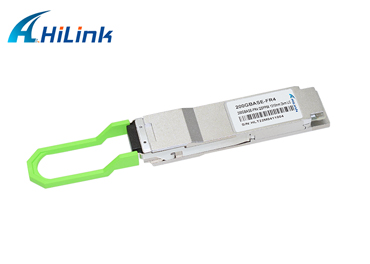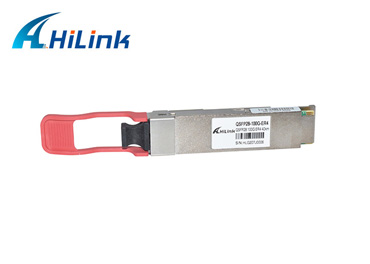How to Choose SFP Transceivers?
Dec. 10, 2022
SFP, SFP+ or QSFP are all transceivers used to connect switches or other network devices to copper or fibre optic cables. They are most commonly used to add fibre ports. Which SFP transceiver you choose depends on the type of cable, the application, the optical range required for your network and the required data transfer rate.
What is an SFP?
SFP or Small Form Factor Pluggable Transceivers are compact, hot-swappable transceivers designed to support 100/1000Mbps Ethernet, Fibre Channel and SONET as well as other communication standards.SFP transceivers support speeds up to 4.25Gbps and are commonly used in telecom and datacom applications. SFP ports are found in a variety of devices, from Ethernet switches to routers, NIC cards and firewalls. The small pluggable specification is based on IEEE802.3 and SFF-8472.
SFP and SFP+
SFP and SFP+ transceivers are almost identical in size and appearance. The main difference is that SFP+ is a newer version that supports higher speeds of up to 10Gbps. The difference in data rate also results in a difference in transmission distance - SFPs typically have a longer transmission distance. the SFP+ specification is based on SFF-8431. in terms of SFP and SFP+ compatibility, SFP+ ports typically accept SFP optics but at a reduced speed of 1Gbps. however, please note that you cannot plug SFP+ transceivers into SFP ports as SFP+ does not support speeds below 1Gbps. However, please note that you cannot plug SFP+ transceivers into SFP ports as SFP+ does not support speeds below 1Gbps.
200G 2KM QSFP56 FR4
GBIC and SFP
Before SFP and SFP+, the most common transceivers were Gigabit Interface Converters or GBICs.
What is a QSFP port?
The QSFP or Quad Small Pluggable Transceiver is another type of compact hot-swappable transceiver. It supports Ethernet, Fibre Channel, InfiniBand and SONET/SDH standards with different data rate options. QSFP modules are typically available in several different types: 4x1Gbps QSFP, 4x10Gbps QSFP+, and 4x28Gbps QSFP28.
QSFP+ and QSFP28 are the latest versions and support a wide range of 40Gbps and 100Gbps applications. both QSFP+ and QSFP28 modules integrate 4 transmit channels and 4 receive channels. qSFP+ supports 4x10Gbps or 1x40Gbps, while QSFP28 can support 4x25Gbps, 2x50Gbps or 1x100Gbps, depending on the transceiver used. QSFP specifications are based on SFF-8436.
How do I choose an SFP transceiver?
In addition to SFP, SFP+ and QSFP, you also need to consider the application. there are different types of SFP transceivers, depending on their use, such as single mode and multimode SFP. singlemode SFP transceivers work with single mode fibre, while multimode SFPs are compatible with multimode fibre. There are also long-range WDM SFP transceivers for multiplexing, simplex SFPs for single-fibre applications, video SFP transceivers for transmitting HD video, and PON SFP transceivers for fibre-based access networks.SFPs are available for commercial and extended operating temperature ranges, with or without extended diagnostic capabilities.
100G 40KM QSFP28 ER4
SFP Compatibility
The Small Form Factor Pluggable specification is published in the SFP Multisource Protocol and allows you to mix and match components from different vendors. However, some IT equipment manufacturers sell networking equipment that only supports vendor-specific SFPs. to ensure compatibility, check the vendor's optical test centre or ask your vendor to verify compatibility.
Need help choosing between SFP and SFP+ QSFP? Contact Hilink for expert advice on network transceivers.













